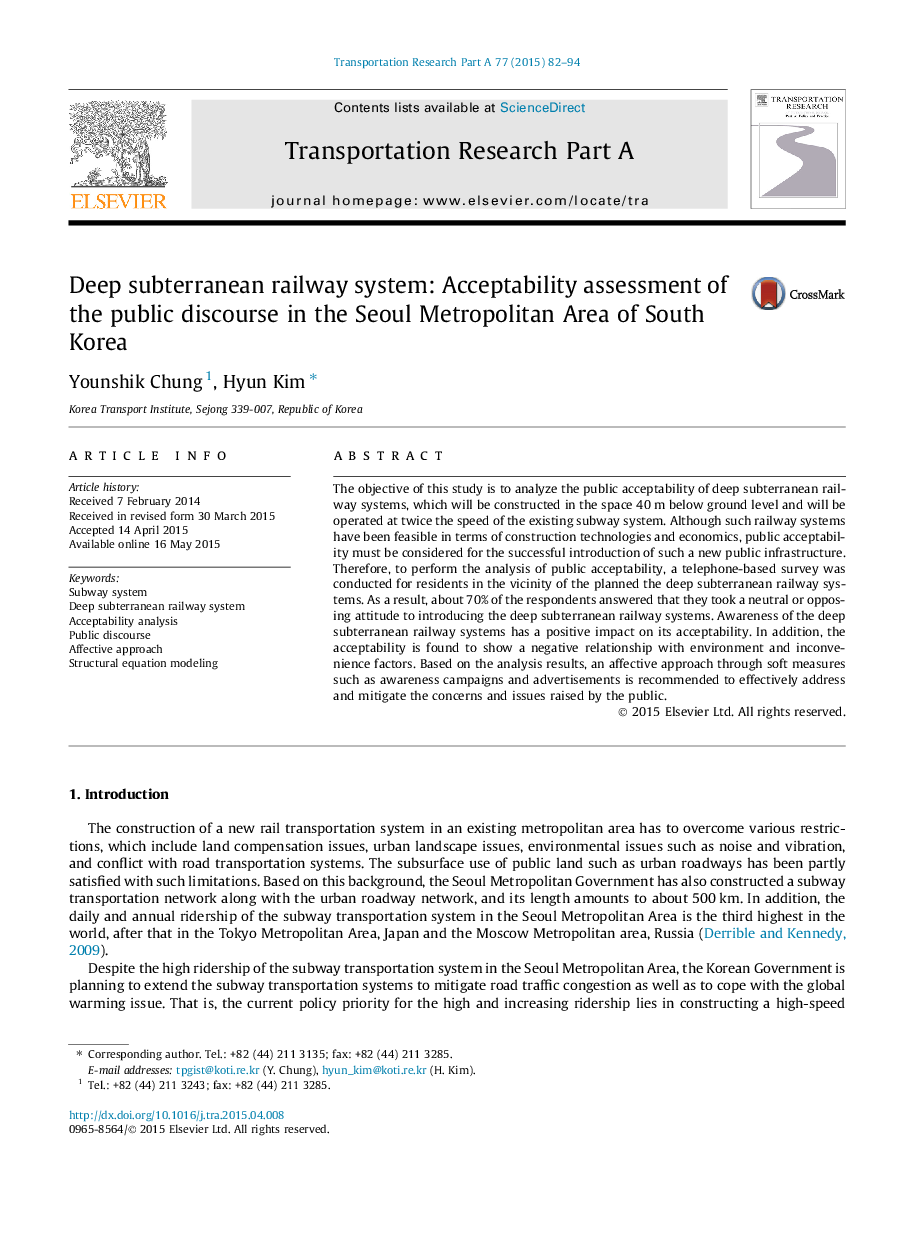| Article ID | Journal | Published Year | Pages | File Type |
|---|---|---|---|---|
| 310406 | Transportation Research Part A: Policy and Practice | 2015 | 13 Pages |
•The concept of deep subterranean railway systems is introduced.•Its acceptability is examined through a telephone-based survey.•SEM is applied to identify causal factors to its acceptability.•Some policies to increase its acceptability are suggested.
The objective of this study is to analyze the public acceptability of deep subterranean railway systems, which will be constructed in the space 40 m below ground level and will be operated at twice the speed of the existing subway system. Although such railway systems have been feasible in terms of construction technologies and economics, public acceptability must be considered for the successful introduction of such a new public infrastructure. Therefore, to perform the analysis of public acceptability, a telephone-based survey was conducted for residents in the vicinity of the planned the deep subterranean railway systems. As a result, about 70% of the respondents answered that they took a neutral or opposing attitude to introducing the deep subterranean railway systems. Awareness of the deep subterranean railway systems has a positive impact on its acceptability. In addition, the acceptability is found to show a negative relationship with environment and inconvenience factors. Based on the analysis results, an affective approach through soft measures such as awareness campaigns and advertisements is recommended to effectively address and mitigate the concerns and issues raised by the public.
